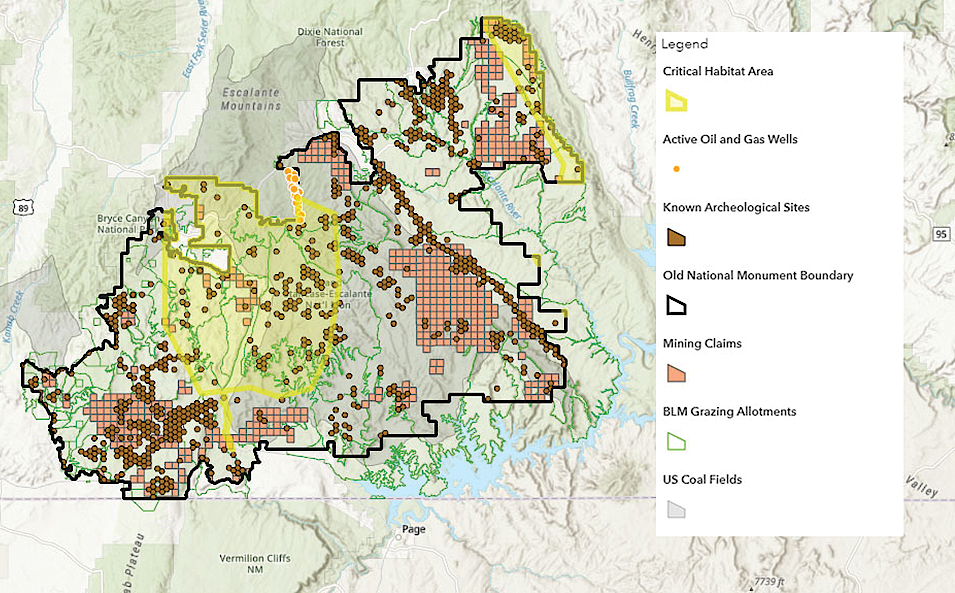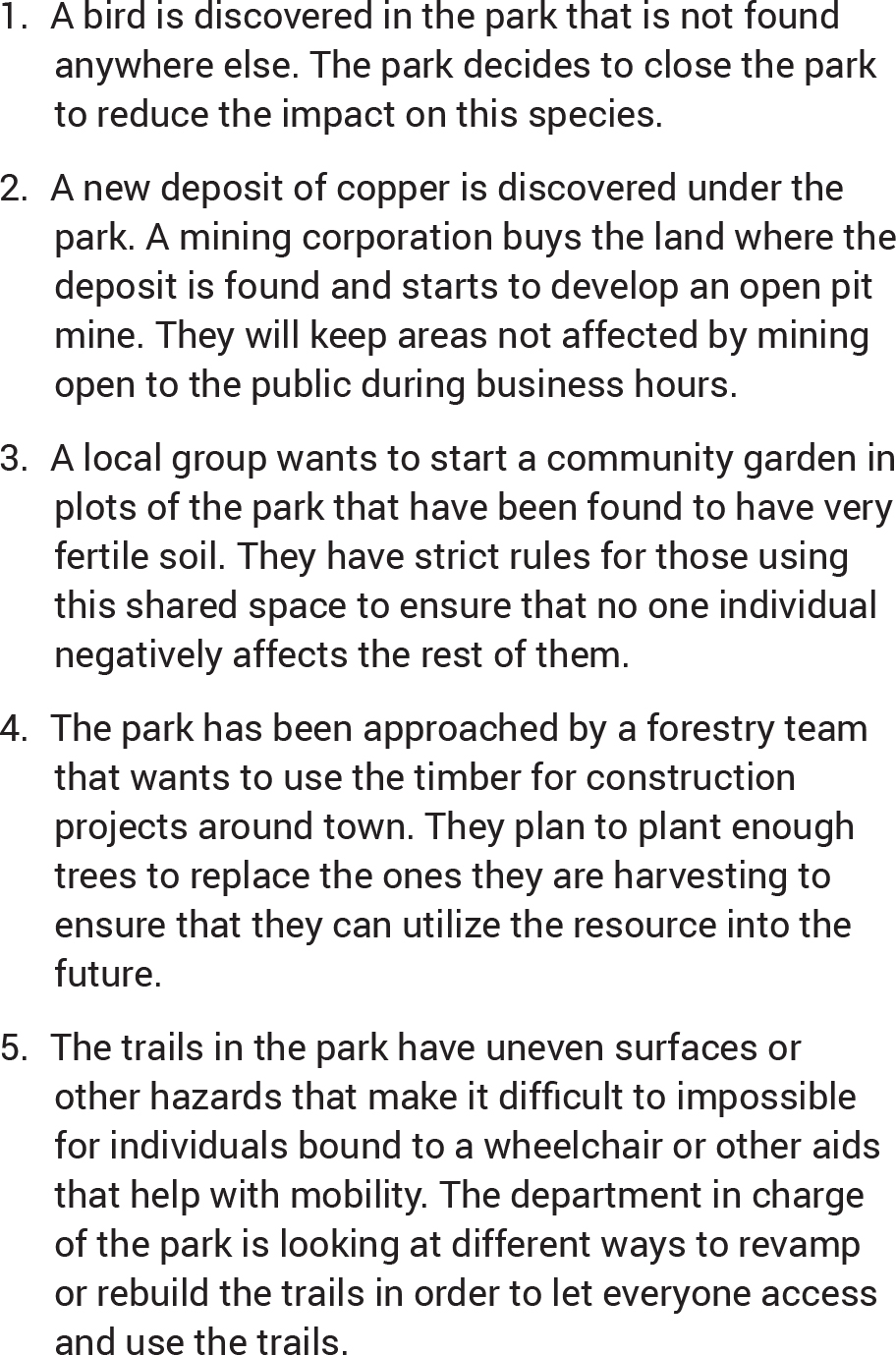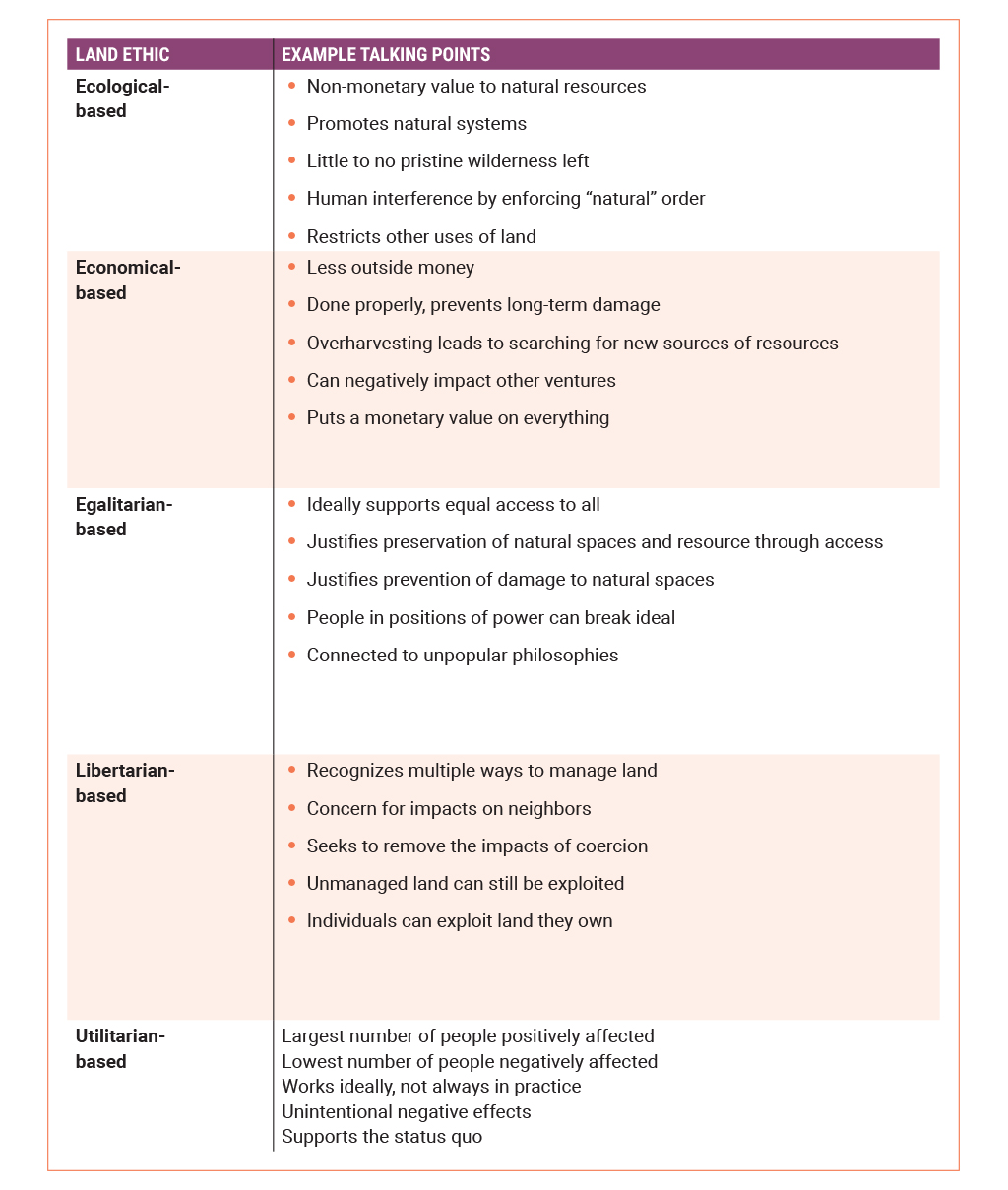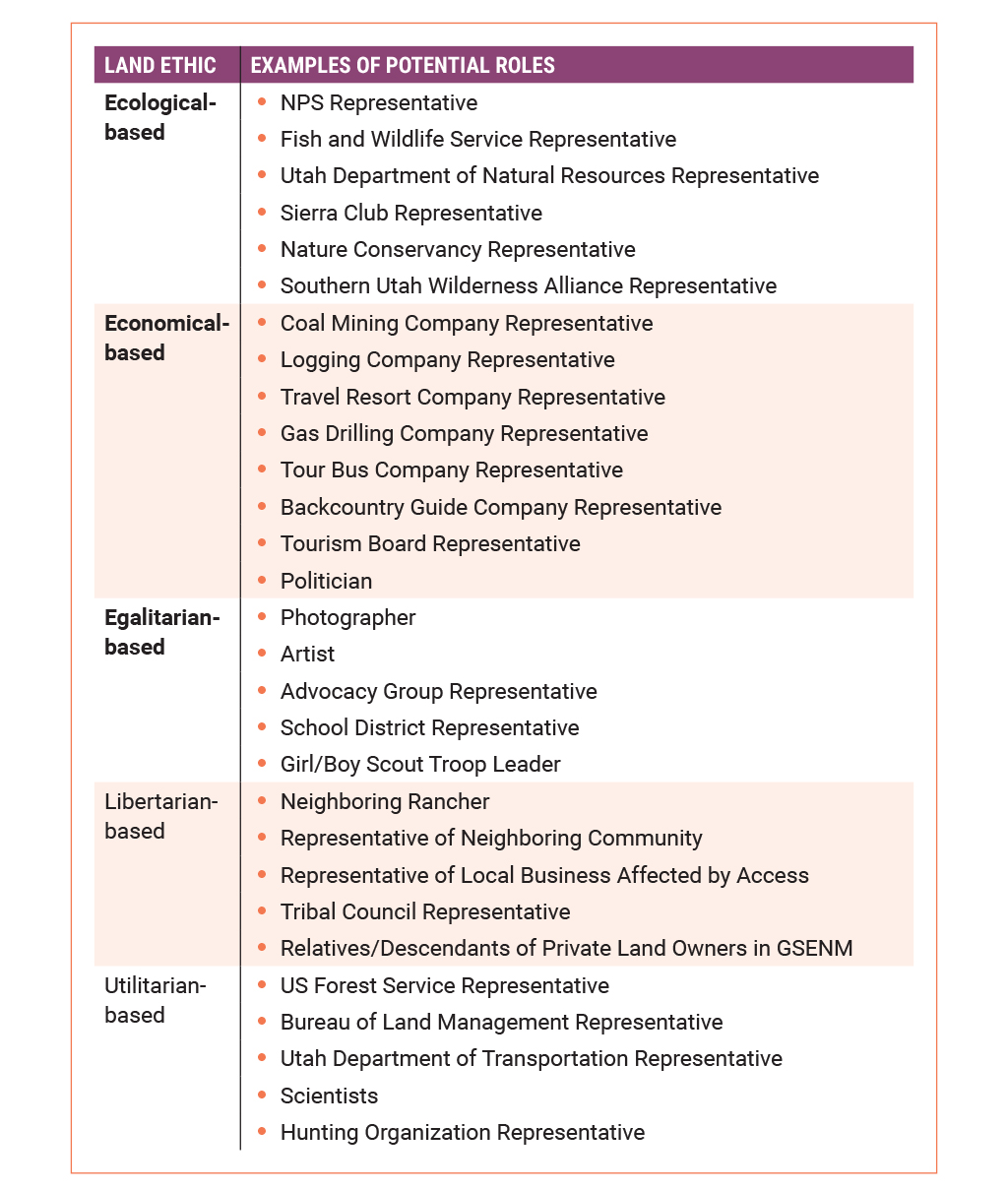Investigating Land Ethics
Exploring land usage through historical case studies and a student symposium
You have just finished a vacation at Yellowstone National Park. On your trip, you and your family saw the natural wonders preserved there: the colorful, steaming geysers; the wild rivers; the lush forests; the powerful bison; and the majestic eagles. You likely got stuck behind other people visiting at the same time while driving around the vast wilderness. On your way home, you passed through Gallatin National Forest and noticed cows grazing in some areas, logging operations in others, and a few controlled burns. All are attempts to sustainably manage the timber provided by the forest. Once outside of the Gallatin, you see vast farms and larger cattle operations. You arrive at a town and see a collection of homes, businesses, and town government buildings. As you drive home, you think about why these areas are used so differently and what led to such different perspectives.
Land ethics are the ways that we justify our usage of the land. Today this topic is more important than ever as we balance our needs, such as food, water, and energy, with the systems of the natural world. The activity described here introduces students to the concept of land ethics using historical case studies of five common categories of ethics. The activity ends with a symposium examining a real-life example: Grand Staircase-Escalante National Monument (GSENM) in southern Utah, and the potential future use of this land (see Figure 1). Engaging students in argumentation about this example allows them to see multiple sides of this complex issue.

History of land ethics
Science is underpinned by collaboration and argumentation; scientists develop and critique arguments as part of their everyday work. Discourse in the science classroom, however, has historically been dominated by direct instruction. Argumentation has been increasingly included in classroom activities in an attempt to develop more authentic science tasks (Schwarz, Passmore, and Reiser 2017). Historical case studies are one way of introducing a topic for argumentation (Rogan-Klyve et al. 2015; Askew and Gray 2016; Herreid, Schiller, and Herreid 2012) because they give the reader a chance to see historical scientists as more than just names, dates, and accomplishments. In this activity, historical case studies were used alongside a symposium to engage students in argumentation about the different types of land ethics that affect our public lands.
Land ethics activity
This activity consists of two main parts: the use of historical case studies and a symposium leading to a protection plan for GSENM. All documents described below are available online. While this is described as a two-day lesson, some classes may take an additional day to increase the time students have for research. While we used this activity in an environmental science course, it could also be used in a biology unit focusing on human impacts on the environment.

To introduce land ethics, we examined how Alexander von Humboldt’s study of the Spanish colonies in present day Colombia and Venezuela started a dialogue on the impact of human use of the land. The introductory case study also briefly describes the five land ethics and some of the individuals who championed them in the past. The symposium letter and the quick resource fact sheet from the scenario document were handed out at the same time as the case studies. These documents gave guidance on useful information that the students could reference, and introduced them to the symposium that took place on Day 2.
Each case study has sections about its origins, which individuals and organizations typically use the land ethic, and their benefits and risks. Some of these talking points are in Figure 3. Students then thought about the roles they want to represent in the upcoming symposium. Students were able to draw from any appropriate organization for their given land ethic, and be a representative of that group. Some examples of representatives are in Figure 4. The goal of Day 1 was to introduce the idea of land ethics and for groups to prepare for the symposium on Day 2.


Day 2
During preparation for the symposium, we found that some groups required extra assistance because of the complexity of their position. We used strategic grouping to help alleviate this problem and focused more of our time during student preparation for the symposium with these groups. Additionally, given the reading level of much of the material available we would recommend providing a few resources directly to the group along with an outline to help them get the main information from the readings. We also found it important to encourage all groups to think about the types of questions they are going to ask the other groups, and what questions the other groups might ask of them to encourage deeper thinking.
As part of the symposium, the students came to a consensus on a five-part protection plan by voting as stakeholders. Each land ethic had one part written specifically for them that they could argue for. Unlike the first part of the symposium, students were not bound to their assigned land ethics while voting. If another student had made a convincing argument, they could vote for or against it based on another land ethic.
The five parts of the protection plan were: (1) All collection of plant, animal, fossil, or artifacts will be done by permit only; (2) Cattle grazing is permitted throughout the GSENM area; (3) Areas rich in mineral deposits, such as copper or coal, will be opened for mining, assuming no human artifacts or fossils are found; (4) All for-profit groups operating in GSENM must have at least one person on staff to explain what they are doing to visitors from the general public; (5) Culturally and traditionally associated tribes will retain access to their ancestral lands.
As the activity moved into the voting portion of the symposium, the students were provided with five sticky notes each. These sticky notes served as a “yes” vote for the five parts of the protection plan. Students placed their sticky notes by any of the five parts of the protection plan that they agreed with. The five parts can be placed on whiteboards, chalkboards, or poster paper. All parts receiving votes greater than half of the number of participants passed, and those that received fewer than half of the numbers of participants did not pass. If any ties occurred, students would present arguments about reasons to vote for or against the part in question.
As an extension, student groups could evaluate and develop arguments for the five different land protection plan suggestions to present as part of the symposium. They could evaluate how the implementation of their chosen suggestion could cause changes to the GSENM region. While this would take additional class time, it would allow the students to make the effects of changed policies on the GSENM more explicit.
Conclusion
By combining historical case studies with a symposium, this activity gave students the opportunity to engage with multiple ideas about land ethics in the context of a real national park. The historical case studies humanized the individuals who helped to form the land ethic ideas we use today. In the end, the activity helped our students better understand the varied land ethics and how they shape the land around us.
Earth & Space Science Literacy Middle School



